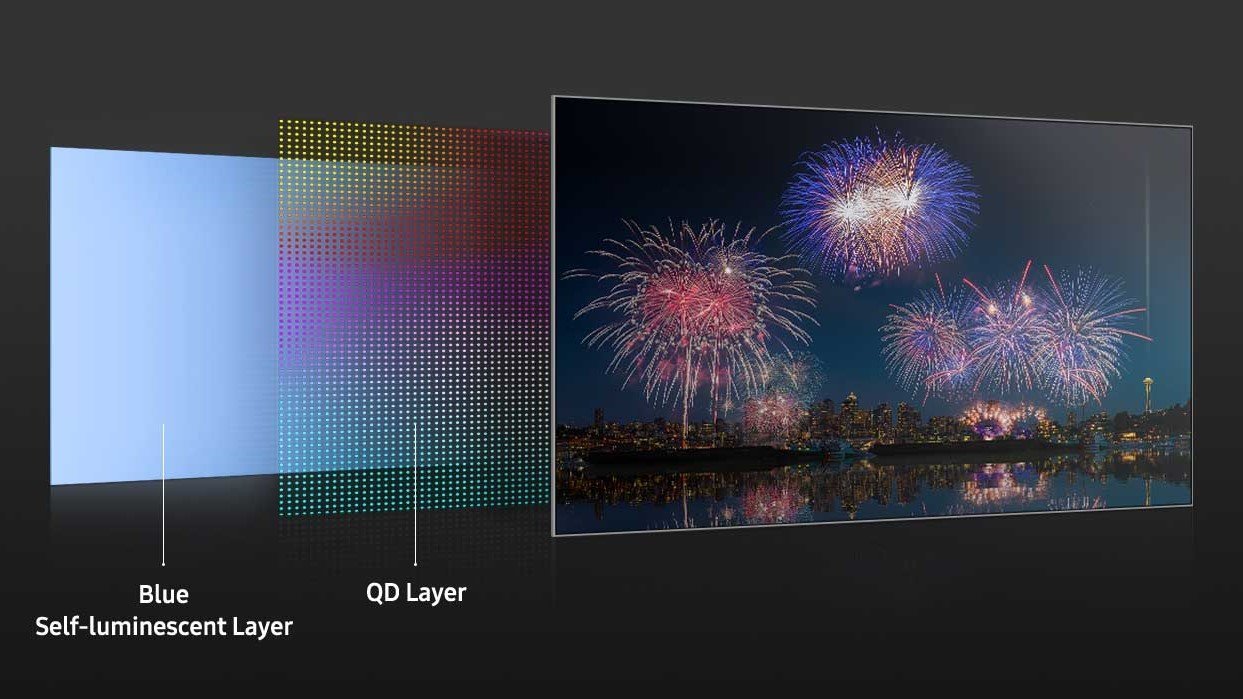Samsung Display is reportedly trying to develop a slimmer version of its new QD-OLED display panel technology in an effort to make them more flexible and reduce manufacturing costs, according to reports in South Korean media.

A report in The Elec said Samsung Display currently uses two glass substrates to build its QD-OLED panels, and is trying to reduce this to just one.
The most beneficial aspect of this new design is that the QD-OLED displays would be rollable, similar to LG Display’s White OLED displays that were famously incorporated into the incredibly expensive but immensely impressive LG Signature OLED R television.
At present, Samsung Display’s existing QD-OLED displays use two glass substrates, one of the thin-film transistor layer and another for the QD colour conversion layer, the report said.
Its present QD-OLED displays are made up of several layers, starting with a glass substrate TFT, anode, emission layer, cathode, blue OLED encapsulation, filter, QD colour conversion layer encapsulation, QD colour conversion layer and a QD colour conversion layer glass substrate.
With the new design, Samsung Display is hoping to remove the final QD colour conversion layer glass substrate that sits at the top of the panel. It’s aiming to do this by applying inkjet printing atop of the blue OLED encapsulation, before the QD colour conversion encapsulation process is added atop of it.
If Samsung Display succeeds, it would be able to simplify the production process of QD-OLED and save costs on materials that could then be passed onto consumers. It would also enable Samsung Display to rival LG Display in terms of OLED innovation. LG has come up with all kinds of elaborate concepts that take advantage of White OLED’s flexibility, and it can be assumed that Samsung Display would like to be able to do something similar.
However, it needs to simplify a production process for QD-OLED that is currently more complex than WOLED, The Elec stated in its report.
Assuming the method succeeds, The Elec said Samsung Display might be able to remove additional layers besides just the QD colour conversion layer glass substrate, potentially making QD-OLED a simpler structure than WOLED.
The first ever QD-OLED TVs will go on sale later this year, including Samsung Electronics' S95B OLED TV and Sony's A95K QD-OLED TV.